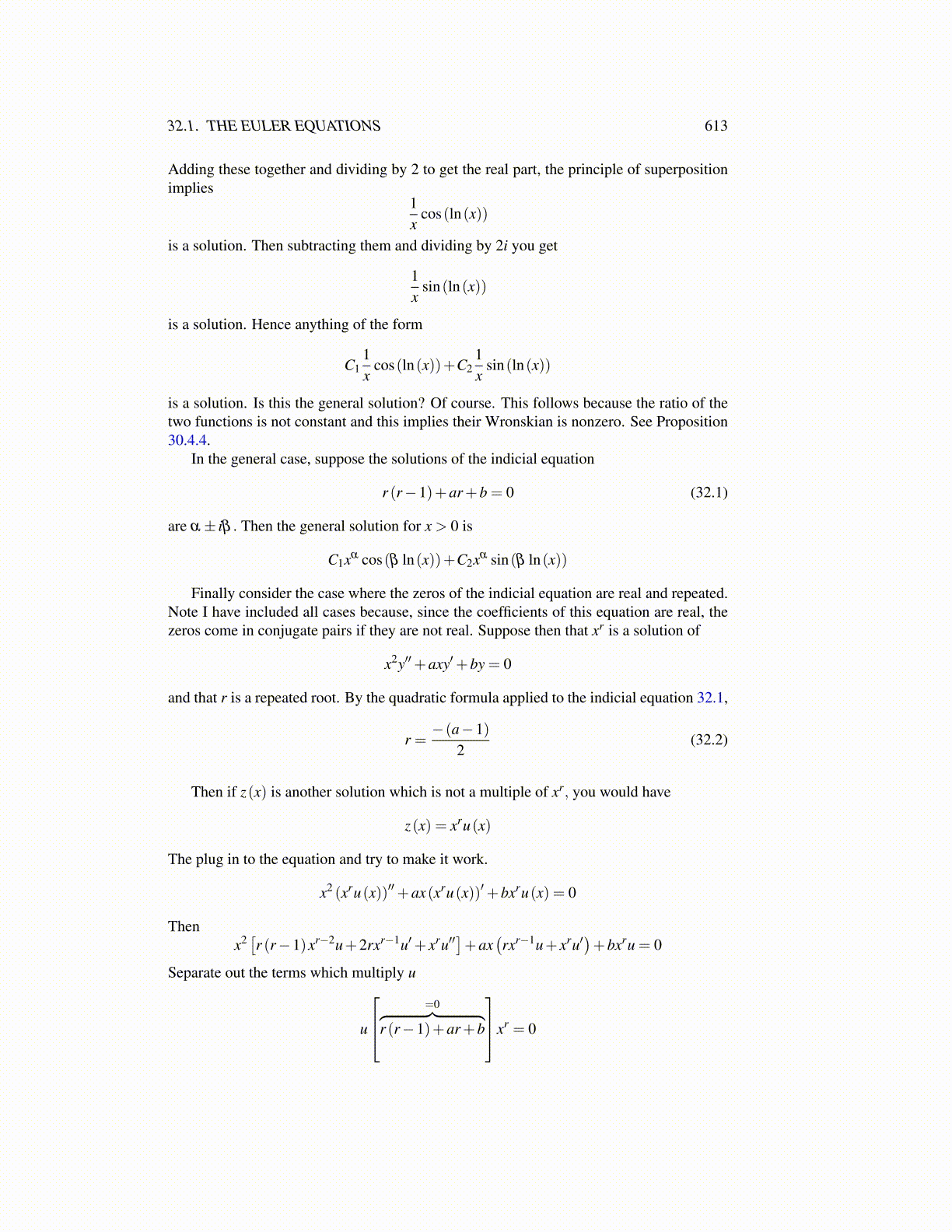
32.1. THE EULER EQUATIONS 613
Adding these together and dividing by 2 to get the real part, the principle of superpositionimplies
1x
cos(ln(x))
is a solution. Then subtracting them and dividing by 2i you get
1x
sin(ln(x))
is a solution. Hence anything of the form
C11x
cos(ln(x))+C21x
sin(ln(x))
is a solution. Is this the general solution? Of course. This follows because the ratio of thetwo functions is not constant and this implies their Wronskian is nonzero. See Proposition30.4.4.
In the general case, suppose the solutions of the indicial equation
r (r−1)+ar+b = 0 (32.1)
are α± iβ . Then the general solution for x > 0 is
C1xα cos(β ln(x))+C2xα sin(β ln(x))
Finally consider the case where the zeros of the indicial equation are real and repeated.Note I have included all cases because, since the coefficients of this equation are real, thezeros come in conjugate pairs if they are not real. Suppose then that xr is a solution of
x2y′′+axy′+by = 0
and that r is a repeated root. By the quadratic formula applied to the indicial equation 32.1,
r =−(a−1)
2(32.2)
Then if z(x) is another solution which is not a multiple of xr, you would have
z(x) = xru(x)
The plug in to the equation and try to make it work.
x2 (xru(x))′′+ax(xru(x))′+bxru(x) = 0
Thenx2 [r (r−1)xr−2u+2rxr−1u′+ xru′′
]+ax
(rxr−1u+ xru′
)+bxru = 0
Separate out the terms which multiply u
u
=0︷ ︸︸ ︷r (r−1)+ar+b
xr = 0